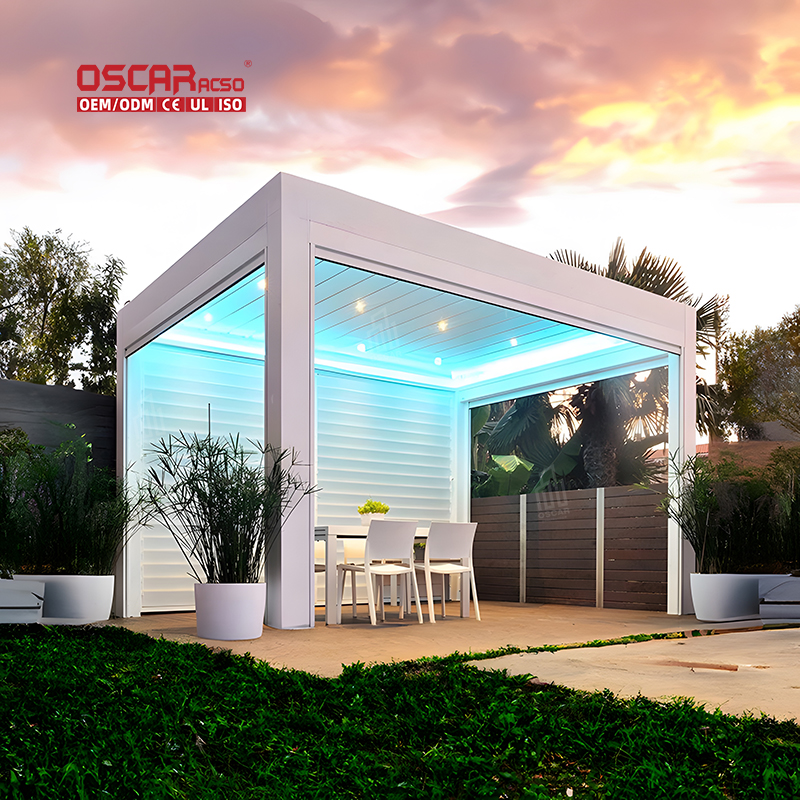Pergola on the Wharf, Unveiling the Ownership Behind Waterfront Charm
Ever wondered who owns that beautiful pergola down at the wharf? 🤔 It’s a question that pops up when you’re enjoying the...
.jpg)
Ever wondered who owns that beautiful pergola down at the wharf? 🤔 It’s a question that pops up when you’re enjoying the shade and scenery at these waterfront structures. Let’s dive into the fascinating world of pergolas—especially those by the water—and explore who might be behind them.
What Even Is a Pergola?
A pergola is an outdoor structure with a roof made of beams or slats that provide partial shade. When built on a wharf or码头, it often serves as a gathering spot for people to enjoy the view, relax, or socialize. These structures can be found in various settings, from public spaces to private properties, and their ownership can vary widely.

Possible Owners of a Pergola on the Wharf
- •
Local Governments or Municipalities: Many wharves are public spaces, and pergolas there might be owned and maintained by local authorities. They invest in such structures to enhance community areas and promote tourism.

- •
Private Businesses or Restaurants: Some pergolas are part of waterfront cafes, restaurants, or resorts. For example, a dining establishment might add a pergola to create an inviting outdoor seating area.
- •
Historical or Preservation Societies: In cases where wharves have historical significance, nonprofit groups might own and maintain pergolas to preserve cultural heritage.
- •
Individual Property Owners: If the wharf is adjacent to private land, the pergola could be owned by homeowners or landlords as an extension of their property.
Why Ownership Matters
Knowing who owns a pergola can clarify issues like:
- •
Maintenance responsibilities 🛠️: Is it well-kept or falling apart?
- •
Public access rights 🚶: Can everyone enjoy it, or is it restricted?
- •
Commercial use: Are there fees or permits required for events?
Ownership also influences the design and purpose—for instance, a city-owned pergola might be simpler, while a private one could be more luxurious.
Controversies and Public Perception
In some cases, waterfront structures spark debates. For example, when billionaires like Terry Pegula flaunt luxury yachts while taxpayers fund stadiums, it highlights tensions between private wealth and public resources . Although not directly about pergolas, this reminds us that ownership of public spaces can be a sensitive topic. If a wharf pergola is built with public funds but benefits private entities, it might face similar scrutiny.
Global Perspectives on Waterfront Structures
From the bamboo sheds in Machong, China, which serve as community hubs , to the historic Banana Wharf in Kaohsiung, Taiwan , waterfront structures often reflect local culture and ownership models. These examples show how pergolas and similar features can be deeply embedded in community life.
My Take: The Blurred Lines of Ownership
In my view, the ownership of pergolas on wharves often blends public and private interests. While governments may fund them, private businesses sometimes manage them for profit. This can lead to amazing spaces but also conflicts—like when access becomes exclusive. Ideally, these structures should serve the community, with transparency in who owns and operates them.
How to Find Out Who Owns a Specific Pergola
- •
Check with local municipal offices or parks departments.
- •
Look for plaques or signs onsite that indicate ownership or dedication.
.jpg)
- •
Search public records or property databases if the wharf is privately tied.
Remember, the answer might not be straightforward, especially in areas with mixed public-private partnerships.
The Bigger Picture: Urban Development and Waterfronts
Wharves and pergolas are part of broader urban planning trends. Cities worldwide are revitalizing waterfronts to boost tourism and quality of life. Who owns these spaces—and who benefits—can shape the character of a city. For instance, the pagar laut area in Tangerang, Indonesia, saw disputes over land certificates near seawalls, showing how ownership issues can arise in coastal developments .
Final Thoughts
Pergolas on wharves are more than just pretty structures; they represent how communities use and share space. Whether owned by the public or private entities, they should enhance accessibility and enjoyment for all. 🌊 So next time you relax under one, take a moment to appreciate the story behind it—and who might be its owner!
.jpg)

